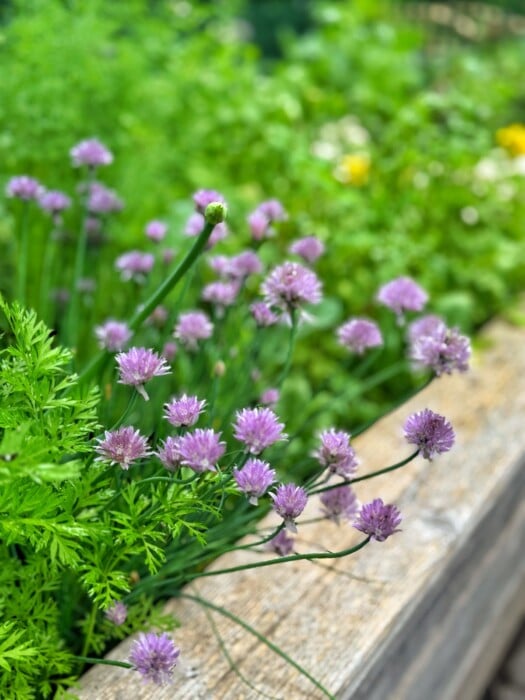Fatsia japonica care guide: light, soil, water, pests, diseases, propagation. Grow healthy Japanese Aralia indoors with these easy tips!
Fatsia japonica, also known as the Japanese Aralia, spider web, or glossy-leaved paper plant, is a showstopper. With its dramatic, oversized leaves that resemble giant hands, this evergreen shrub brings a touch of the exotic to any garden, patio, or even your living room. Native to the woodlands of southern Japan and Korea, this plant is surprisingly easy to care for, making it a favorite among novice and experienced gardeners alike.
I’m growing Fatsia Japonica Variegata – the foliage is simply stunning and the plant adds a lot of architectural presence to my plant room. Learn how to grow it with these simple tips!
(Posts on stacyling.com may contain affiliate links. Click HERE for full disclosure.)

Getting to Know the Fatsia Japonica
This bold beauty boasts large, glossy, deep green leaves that can reach up to 16 inches wide. These leaves, divided into 7-11 lobes, create a lush, tropical feel. In the fall, mature plants may surprise you with globe-shaped clusters of creamy white flowers, followed by black berries.
While typically hardy in USDA zones 8-10, fatsia japonica can be grown as a houseplant in cooler regions, bringing a touch of the outdoors in. I’m in zone 6b, so I can only grow this plant indoors.
Creating the Ideal Environment for Your Japanese Aralia
Fatsia japonica is surprisingly adaptable, but providing the right conditions will help it truly thrive.
Light Requirements
This plant prefers a shady or partially shaded location, especially in hotter climates. Dappled shade is ideal for the best foliage appearance. While it can tolerate some morning sun, harsh midday rays can scorch its leaves. If you’re growing it indoors, place it near a window with bright, indirect light. I am growing mine in a west-facing window in my sunroom and it is thriving in that spot.
Soil Conditions
Fatsia japonica prefers moist, well-drained soil that is rich in organic matter. It’s not too picky and can tolerate a range of soil types, from sandy to clay, as long as the drainage is good. I would avoid heavy, compacted soils that retain too much moisture so the roots don’t get waterlogged. I like to make my own chunky soil mix that includes peat moss, perlite, potting mix, and orchid bark to ensure good drainage. But you can also buy a chunky soil mix premade for you too!
Temperature
This plant enjoys warm temperatures between 60-75°F (15-24°C).

Humidity
Fatsia japonica tolerates average humidity levels, but it will appreciate occasional misting, especially when grown indoors. I have to admit that I do not mist mine, but instead opt to bump up the humidity levels by grouping it with other plants and running a humidifier in the room. In the warmer New Jersey months, I bring my Japanese aralia outdoors to summer in the heat and humidity where it thrives during the growing season.
Watering Fatsia Japonica
Consistent moisture is key, especially during the growing season. Make sure the soil stays moist but not soggy, as overwatering can lead to root rot. Allow the top inch or two of soil to dry out completely between waterings. When you do water, water thoroughly until water drains from the drainage holes.
I’ve noticed my spider web plant lets me know when it needs a drink with drooping leaves if I’m not paying attention. The best way to tell whether your plant needs to be watered is to stick your finger down into the soil about 1-2″ and feel for dryness. But you can also use this moisture meter instead if you prefer.
Reduce watering in the winter months when growth slows down, but keep in mind dry heat from indoor air can also dry out the soil much quicker.
Fertilizing Fatsia Japonica
Feed your Fatsia japonica with a balanced, slow-release fertilizer in spring and summer to support healthy growth. I feed my spider web plant with a balanced liquid fertilizer every few weeks. In the fall and winter, I cut back on feeding as the plant’s growth slows down and it goes into winter dormancy.

Troubleshooting Common Pests and Diseases on Japanese Aralia
While generally low-maintenance, Fatsia japonica can occasionally be bothered by common pests like aphids, mealybugs, scale, and whiteflies. Keep an eye out for these unwelcome visitors and treat infestations promptly with insecticidal soap or neem oil. You can also use a systemic houseplant insecticide like this that lasts for 8 weeks to help prevent pest problems.
Root rot and leaf spot can also occur, often due to overwatering or poor drainage. Remove the plant from it’s pot, clean off the roots, spray with diluted hydrogen peroxide, cut off dead roots with clean sterilized garden snips and then repot in clean container. I’ve been repotting mine in clear plastic containers so the root systems are easier to see.

Propagating Your Fatsia Japonica
Want more of this stunning plant? Fatsia japonica can be easily propagated through stem cuttings or seeds.
- Stem Cuttings: Take cuttings in spring or summer, dip them in rooting hormone, and plant them in a moist potting mix.
- Seeds: Sow seeds in a warm, bright location and keep the soil consistently moist.
Final Thoughts About Growing Fatsia Japonica
With its bold foliage and easy-going nature, Fatsia japonica is a rewarding plant to grow. Whether you’re adding a tropical touch to your garden or brightening up your indoor space, this versatile shrub is sure to impress.
Happy growing!
For more information about growing fatsia japonica, please read this article from the University of Florida Cooperative Extension.
To drill down on houseplant care basics and growing an indoor garden that thrives, please read my articles:
- Easy Houseplants for Busy People: The Low-Maintenance Approach to Growing an Indoor Garden
- From Shop to Home: How to Acclimate Your Tropical Plants
- Stop Guessing and Master Watering Indoor Plants Like a Pro
- How to Revive Houseplants You Thought Were Goners
- Is Your Houseplant Getting Enough Light? Here’s How to Tell.
Thank you for visiting the blog today!
Enjoy your day! xo







